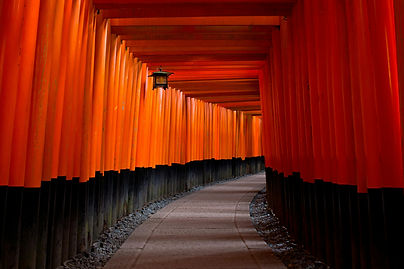Applying to a Job in Japan - 履歴書 and 職務経歴書
- justinlawton
- May 7, 2024
- 3 min read
If you've ever sought employment in Japan, you've likely encountered the 履歴書 (Rireki-sho) and 職務経歴書 (Shokumu-keireki-sho), two essential documents needed for job applications for many companies. The Rireki-sho is equivalent to a resume, while the Shokumu-keireki-sho (let's call it Keireki-sho for the sake of simplicity) is a detailed "work history" document. In simple terms, an English resume is essentially a combination of the Rireki-sho and Keireki-sho into one document. However, there are numerous nuances and differences between them, which we will explore here.
Rireki-sho
Unlike an English resume where the format and aesthetics of the document are left to the applicant, a Japanese Rireki-sho follows a consistent format. In fact, the Japanese Ministry of Health, Labour, and Welfare provides an example of this format which you can find here.
Rireki-sho (Personal Information)
The initial section of the Rireki-sho contains your personal details. This section typically includes your name, date of birth (DOB), age, address, phone number, gender (optional), email address, and optionally, a secondary address, email, and phone number. The Japanese Rireki-sho also includes a box for a photograph of yourself.
Rireki-sho (Academic and Work History)
The second section of your Rireki-sho covers your academic and work history. Typically, this section begins with your academic background followed by your work history, both presented in chronological order with earlier experiences listed first and more recent ones toward the bottom. A unique feature of Japanese resumes that you'll notice is the inclusion of specific lines for entry and departure dates for each institution or employment position.
Tips:
Begin this section with your high school graduation date (no need to include high school admission).
For the reason for leaving a job, "一身上の都合により退職" or "Resigned for personal reasons" is a standard and generally accepted response.
Conclude with 現在に至る (up to present) to indicate your current position.
Rireki-sho (Other Information)
Licenses & Certification
The next section is to input your certifications and licenses that you have. For this section, you only need to include the date of when you obtained the license or certification.
Information about yourself
The next section pertains to additional information you want to provide about yourself. This can include your motivation, interests, strengths, and any other information to make you stand out.
Other preferences
The last section of the Rireki-sho is to indicate any preferences you might have in terms of working conditions.
Keireki-sho
Unlike a Rireki-sho, which has a largely defined format, there is a bit more flexibility in the format of a Keireki-sho. However, it remains relatively standardized and less visually dynamic compared to English resumes. There are 3 general formats below:
Chronological format: This arranges experiences from past to present, with the most recent work listed at the bottom.
Reverse chronological format: Here, experiences are listed from present to past, with the most recent work appearing at the top.
Career format: This format diverges from chronological order and organizes experiences based on the type of work or project involved. It is particularly suitable for specialized positions such as project engineers and other technical roles.
Here is an outline of the fundamental information typically found in a Keireki-sho. While much of it aligns with the content of English resumes, there are some distinct variations:
Enhanced Corporate Information: This includes comprehensive details about the company, such as business specifics, capital, revenue, number of employees, and its listing status, distinguishing it from English resumes, which may not delve into such extensive corporate insights.
Separate Self-Promotion Section: Unlike English resumes, which often integrate self-promotion and career summary into a single section, the Keireki-sho features distinct sections for each.
In summary:
Together, the Japanese Rireki-sho and Shokumu-Keireki-sho encompass a wealth of information about an applicant, surpassing the level of detail typically found in an English resume. Notably, Japanese resumes often feature personal details such as a photograph or age, which are not customary in English resumes. Moreover, Japanese resumes adhere to a more standardized and structured format, fostering uniformity across applications.







Comments